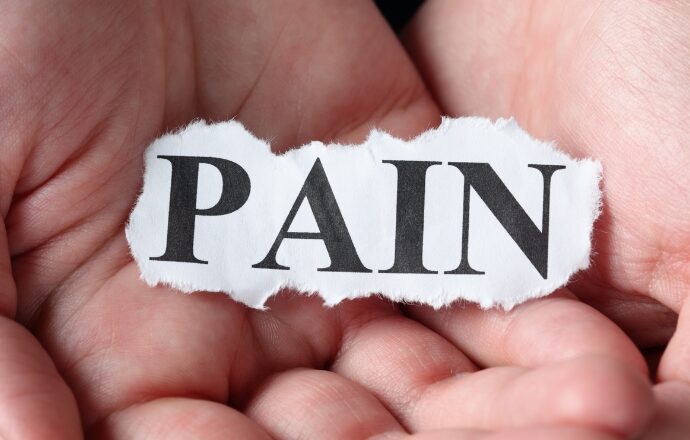Women are less likely to be taken seriously by doctors; did you know that? Indeed, women of color, women with impairments, and women with chronic illnesses face significantly greater challenges. Gender bias has permeated every aspect of healthcare, leading to women receiving incorrect diagnoses, going longer without a proper diagnosis, having their suffering downplayed or disregarded, and being classified as whiners or nervous.
Chronic pain sufferers frequently question whether their suffering is “all in their head,” particularly when it is hard to identify the physical source of the pain. However, the inability to pinpoint a physical cause for pain does not lessen or negate the suffering that is being endured. A person experiences pain on both a physical and psychological level. The mind and body are the same, after all.
Speak up and, if necessary, bring a support person. Find out what the treatment recommendations say. Request the supporting documentation for their suggestion. Seek a different viewpoint. Consult the state’s or the practice’s patient advocate if necessary.
Understanding Chronic Pain
Pain that interferes with day-to-day functioning and lasts more than three months is referred to as chronic pain. Chronic pain can linger for months or even years, in contrast to acute pain, which strikes suddenly, such as after surgery or a sprained ankle.
Chronic pain comes in various forms. You may experience searing, aching, dull, or acute pain. It could be continuous or intermittent. Some patients experience pain in their joints, back, or neck. Others have joint stiffness, radiating pain in the arms or legs, or generalized muscular soreness.
Since no single approach is effective for everyone, managing chronic pain typically calls for multiple forms of treatment. While injections or nerve blocks may block pain signals, medications might soothe muscular tension, reduce swelling, or relax nerves. Recovery is also aided by healthy practices, including stress reduction, adequate sleep, and a well-balanced diet. Personalized treatment programs are essential for achieving long-lasting comfort and improving day-to-day living because every individual reacts differently.
How Does It Feel Living In Chronic Pain?
Pain is an invisible disease. There’s no evidence to support its existence, according to others around you. There is no precise explanation for pain or a laboratory test for it. Given the paucity of data and research on pain, it’s likely that your doctors are unaware of its etiology. Besides, you look just fine, right? However, you are more knowledgeable. You are the only one who truly knows what it’s like to live with chronic pain since you live with it every day. It’s a quiet pandemic if it persists for longer than three months. That’s a major health issue, indeed!
It makes sense that your family and friends would want to assist. But most of the time, they’re just ignorant. They might not understand that acknowledging your suffering and the associated feeling is the most crucial thing they can do for you. Express gratitude to the person who inquires about your well-being. That will motivate them to keep inquiring and showing concern. Asking how you’re feeling allows you to be honest about what it’s like to live with chronic pain.
The Benefits Of Therapy For People With Chronic Pain
Physical health, but also your mental and emotional well-being. With some advantages that go beyond simply helping people manage their physical suffering, therapy can be quite helpful in managing the effects of chronic pain.
1. Emotional Support – The frustration, worry, and grief that frequently accompany chronic pain can be expressed in a safe environment through therapy. By guiding you through these feelings, a therapist can lower your chance of developing anxiety or depression.
2. Stress management – Having chronic pain can lead to a lot of stress, which can worsen pain symptoms. Counseling provides stress-reduction strategies like mindfulness and relaxation that lessen pain perception.
3. Developing Resilience – By emphasizing coping mechanisms and strengths that enable you to have a satisfying life despite the suffering, therapy can assist you in becoming more resilient.
4. Better Relationships – Relationships with loved ones may suffer as a result of chronic pain. To make sure you don’t have to deal with the difficulties of chronic pain alone, therapy can provide techniques to enhance communication and fortify support networks.
Therapy can greatly improve your quality of life by treating the mental and emotional components of chronic pain, enabling you to not only tolerate pain but also flourish despite it.
Conclusion
It is certainly difficult to live with chronic pain, but it is not an insurmountable barrier. By adopting a positive outlook, recognizing and avoiding pain triggers, and changing your lifestyle, you can greatly enhance your quality of life. Keep in mind how important it is to get professional assistance and establish support systems. It may be necessary to adjust to living with chronic pain, but despite the difficulties, it is possible to find happiness, respite, and a fulfilling life.
Note: To learn how to handle living with pain, make an appointment with our skilled physicians who specialize in treating chronic pain.











